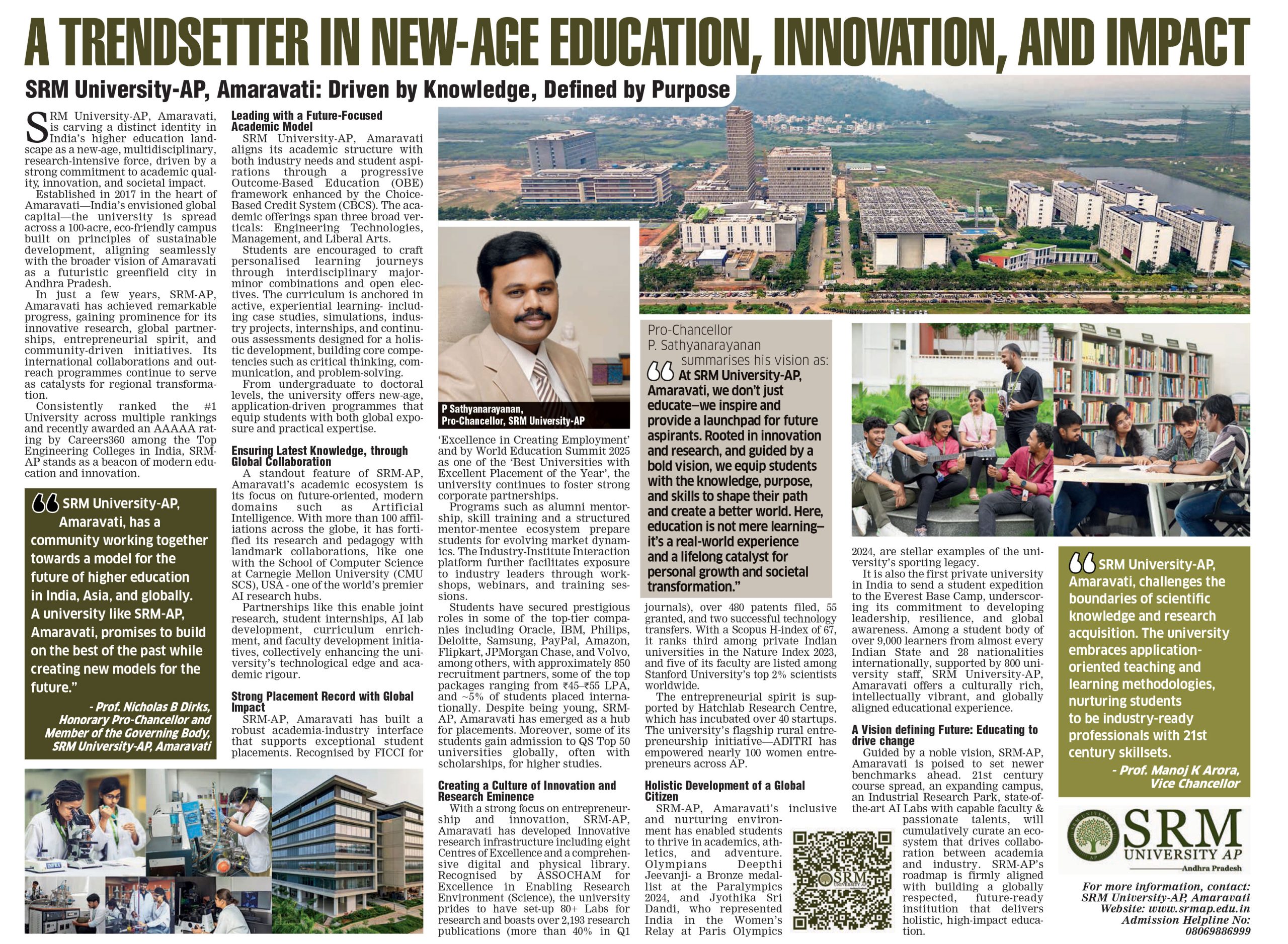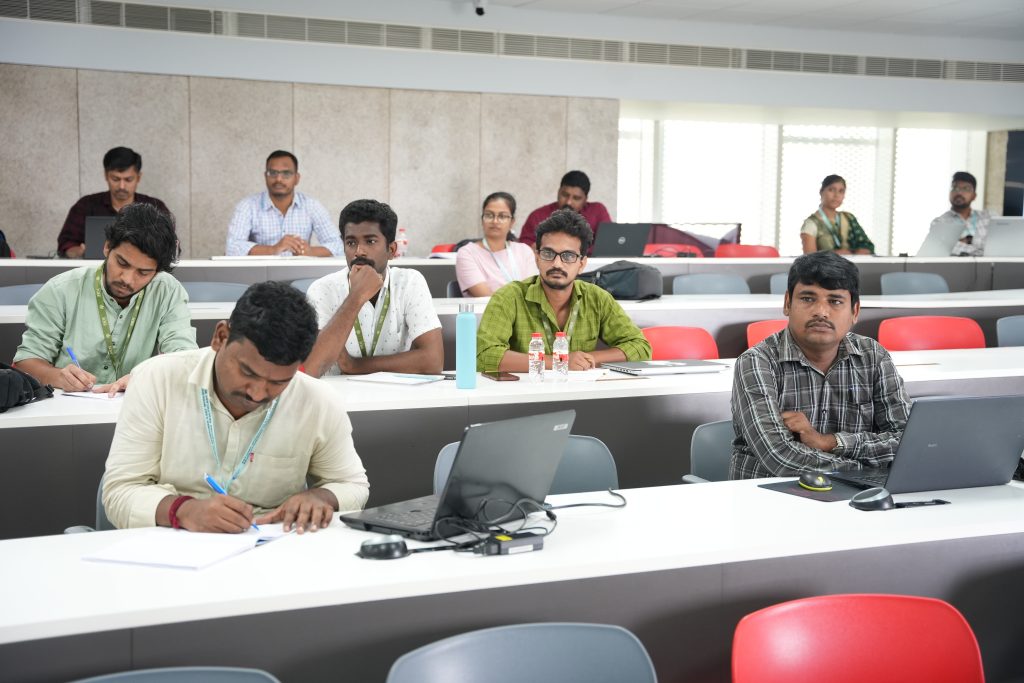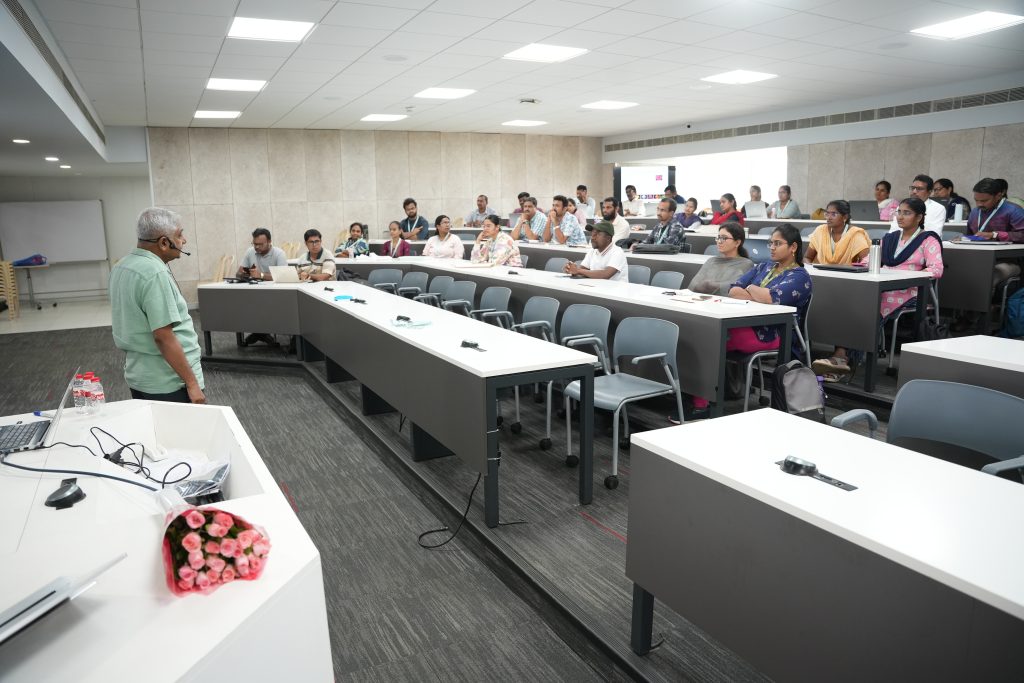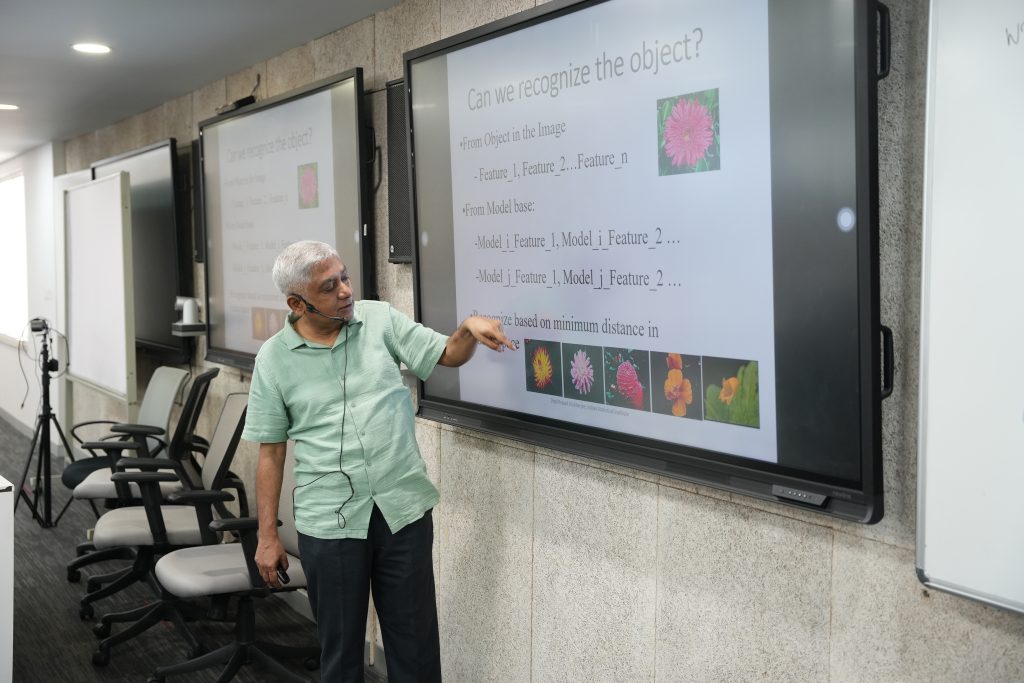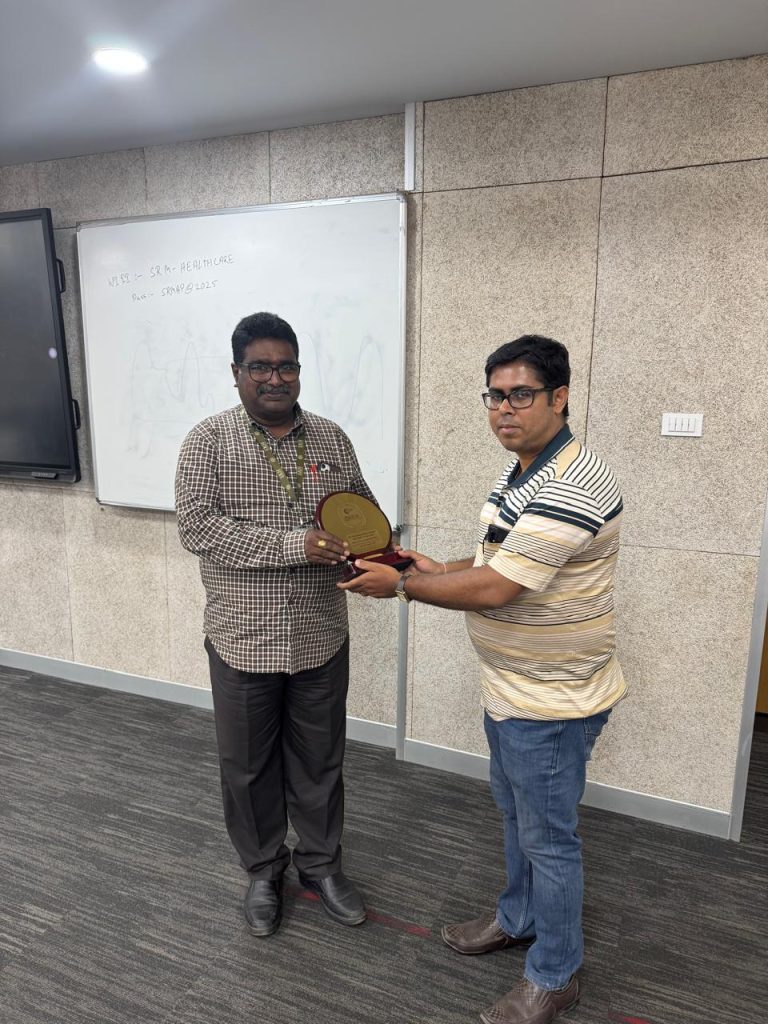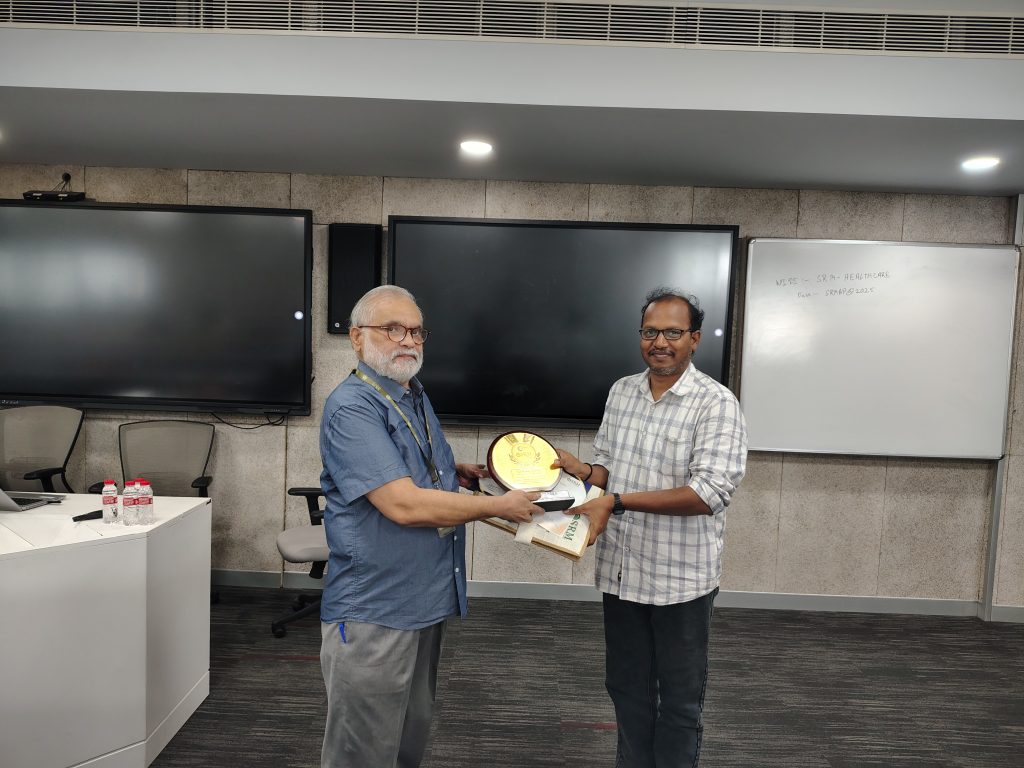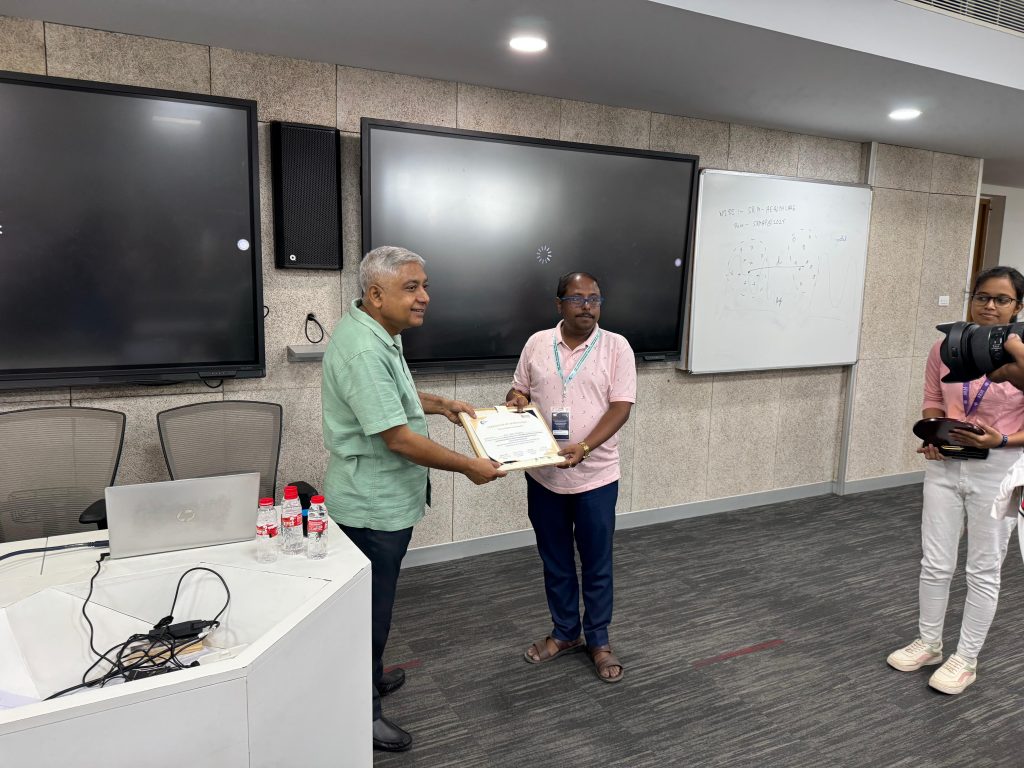- CSE Workshop on Revolutionising Health Care with AI May 30, 2025
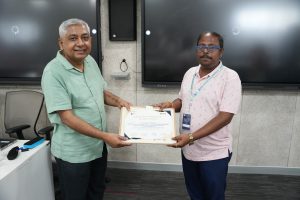 In an era when Artificial Intelligence is growing in popularity, the Department of Computer Science and Engineering decided to leverage its possibilities and expand the scope of its application across the Healthcare sector. The five-day workshop titled Revolutionising Health Care with AI: Computer Biology and Computer, sponsored by DST-ANRF, was one such event.
In an era when Artificial Intelligence is growing in popularity, the Department of Computer Science and Engineering decided to leverage its possibilities and expand the scope of its application across the Healthcare sector. The five-day workshop titled Revolutionising Health Care with AI: Computer Biology and Computer, sponsored by DST-ANRF, was one such event.The five-day workshop explored the revolutionary potential of AI Technologies in medical diagnostics with special emphasis on the areas of Computational biology. The workshop also focused on areas of Computational Biology and Computer Vision to improve healthcare by enhancing clinical decision making and enabling personalised healthcare treatments and diagnosis.
The workshop saw the participation of academicians, research scientists and industrial experts from the fields of computer sciences, biology and data science. The workshop aimed to facilitate discussions on effectively combining computational techniques with biological research.
The workshop, apart from facilitating cross-disciplinary discussion and knowledge sharing, also laid emphasis on revisiting foundational concepts nd advancements in the areas of computer vision and machine learning. They further explored the practical implications of these concepts. The workshop also offered hands-on training opportunities to give the attendees a clear understanding of the concept and delving into areas like AI and Multiomics Data.
The participants also had the opportunity to engage in brainstorming discussions, explore innovative methods that significantly contribute to healthcare improvement, and use algorithms to enable early detection of disease. Among the notable speakers who spoke at the workshop were Prof. (Dr) Lars Kaderali from the university of University of Cologne; Dr Suvendu Rup from NIT Raipur, Prof. (Dr) Amlan Chakrabarti from the A K Choudhury School of Information Technology at the University of Calcutta and an Adjunct Professor at IIIT Delhi and Prof. (Dr) Ram Bilas Pachori among others. Their insights and expertise offered participants a thought-provoking five-day workshop that would meaningfully benefit the field of Healthcare, paving the way for innovative tools and methods that will enhance patient care.
Continue reading → - Achieving Tech Excellence: Finding the Best University for CSE May 30, 2025
- Beyond the Novel: Exciting Career Options after BA English May 29, 2025
- Synthesising Copper-based Particles to Recycle Industrial Mineral Waste into Useful Products May 29, 2025
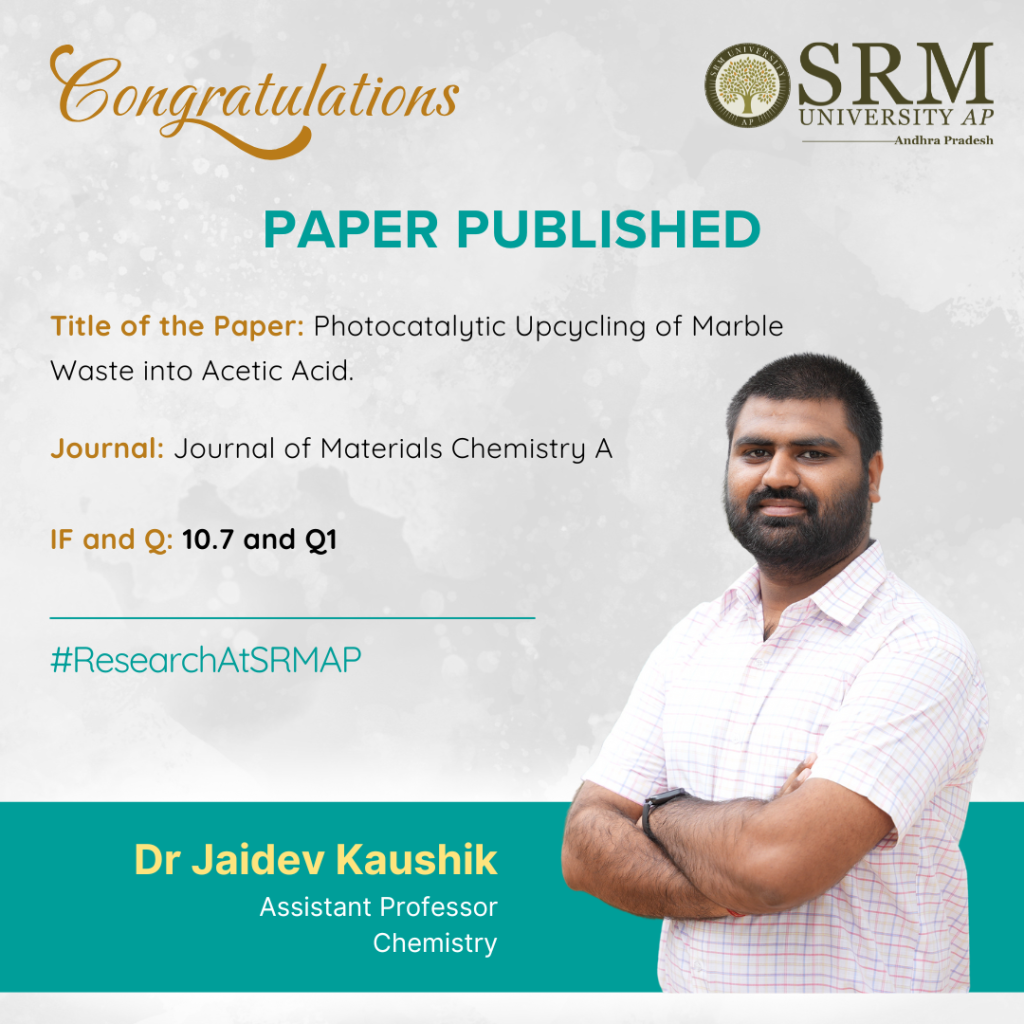
In an attempt to recycle industrial mineral waste into useful products, Dr Jaidev Kaushik from the Department of Chemistry has worked on synthesising copper-based particles that use light to convert carbonate-rich materials like marble dust into acetic acid, a valuable chemical used in industry and fuel production. He has published his research in a paper titled “Photocatalytic Upcycling of Marble Waste into Acetic Acid” in the prestigious Journal of Materials Chemistry A, having an impact factor of 10.7.
The particles drive the reaction efficiently by illuminating the green light on a mixture of the material and hydrogen peroxide solution. He has also tested the method on other carbonate wastes like chalk dust and scale, showing its potential for recycling industrial mineral waste into useful products.
Abstract
In this study, disk-shaped copper sulfide nanoparticles (CuS-NPs) were synthesised via a simple co-precipitation method and used as a photocatalyst for the reduction of carbonate species derived from marble dust into acetic acid (AcOH), an important industrial and biofuel precursor. The photocatalytic reaction was carried out under monochromatic light (525 nm) in a hydrogen peroxide–water mixture, which served as an electron and radical-rich medium. Key parameters such as solvent composition, light source, catalyst concentration and reaction time were optimised to get the maximum yield of AcOH. The reaction mechanism was investigated using radical scavenging experiments. The practical applicability of the approach was further tested on two additional real-life carbonate waste materials, i.e. chalk dust and scale.
Practical Implementation/ Social Implications of the Research
This research offers a sustainable method to convert carbonate-rich industrial wastes like marble dust, chalk dust, and scale into acetic acid, which is widely used in the chemical, pharmaceutical, and biofuel industries. By using light-driven reactions with safe, low-cost materials, the process reduces environmental pollution, supports waste valorisation, and contributes to a circular economy. It can be implemented in industries that generate carbonate waste, promoting green chemistry and lowering dependence on fossil-based raw materials.
Collaborations
Dr Sumit Kumar Sonkar (MNIT Jaipur, India)
Future Research Plans
- The adsorption/photodegradation-assisted quick and efficient removal of next-generation advanced pollutants such as microplastic, pesticides, pharmaceutical waste, etc., by hydrophobic carbon aerogel and their doped and functionalised versions.
- Utilising waste-derived heterogeneous catalysts in organic transformation reactions.
- Selective sensing of toxic metal ions/biomarkers/biomolecules using fluorescent nanomaterials.
- Upcycling of carbonates/CO2 via photo/thermal assisted catalysed reactions to get C1 and C2 hydrocarbons (green fuel).
- Reduction of nitrates/N2 via photo/thermal-assisted catalysed reactions to ammonia.
Link to the article
Continue reading →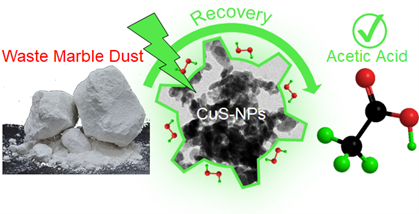
- From Vision to Victory — SRM AP Tops the Times Ranking 2025! May 29, 2025
SRM University-AP continues its legacy of excellence as it emerges as the No.1 Emerging Engineering Institute under 3 categories in the Times Engineering Institutes Ranking Survey consecutively for the second year. The university secured the top position in the categories – Top Emerging Engineering Institute – Overall, Emerging Engineering Institute – Placements and Emerging Engineering Institute – Research Capability. This is a testament to the SRM AP’s impactful research, global partnerships, innovation, and social outreach, which truly exemplify the spirit of an emerging leader in higher education.
Leading with a Forward-thinking Academic Approach
The university aligns its academic delivery with industry expectations and student aspirations by implementing an Outcome-Based Education (OBE) model that is enhanced by the Choice Based Credit System (CBCS).
The curriculum offers interdisciplinary flexibility through major/minor specialisations and open electives, empowering students to customise their learning pathways. Active and experiential methods—case studies, simulations, projects, internships, and continuous assessments—promote 21st-century life skills, including critical thinking and problem-solving.
A Legacy of Outstanding Placements
SRM AP’s partnerships with leading companies strengthen the relationship between academia and industry, ensuring competent student placements. The university maintains an exceptional placement record, placing students in prestigious companies such as Oracle, IBM, Philips, Neilson IQ, Deloitte, Bosch, Samsung, Hewlett Packard, JPMorgan and Chase, BNY Mellon, TOSHIBA, Amazon, Flipkart Volvo, PayPal, and more.
Core initiatives like mentor-mentee programmes, alumni mentorship, rigorous placement and skill training, instil exceptional resilience and adaptability and help young graduates navigate dynamic market conditions. Also, the ‘Industry-Institute Interaction’ platform allows students to interact with professionals from various industries, helping them gain insights into industry work culture, professional requirements, and career-launching.
Dynamic Ecosystem for Ideas and Impact
SRM AP has a world-class research infrastructure with centres of excellence and a well-equipped library, facilitating cutting-edge research. The research culture has led to 2193 publications (over 40% in Q1 journals), 480+ patents filed, 55+ already granted, and 2 technology transfers with industry. SRM AP ranks 3rd among private universities in the Nature Index 2023 and boasts five faculty members listed in Stanford’s top 2% scientists globally.
A dynamic startup ecosystem supported by corporations, enablers, world-class mentors, top-class institutions, foundations, incubators, and the Government, sets SRM AP apart from its peers. The Hatchlab Research Centre has incubated 40+ startups, and the university’s ADITRI initiative—a CSR-driven rural entrepreneurship summit—has empowered 100 women entrepreneurs from six mandals of Andhra Pradesh through skill-building, mentoring, and market access.
Educating for a New Era
SRM AP has implemented the Strategic Plan 2023–2028 to become an innovation-driven institution, prioritising academic excellence, research innovation, student empowerment, and institutional sustainability. In cognisance of the pioneering vision fuelling Amaravati’s growth, SRM University-AP aspires to build a future-ready, inclusive, and globally respected academic institution that offers holistic education to its students.
Continue reading →